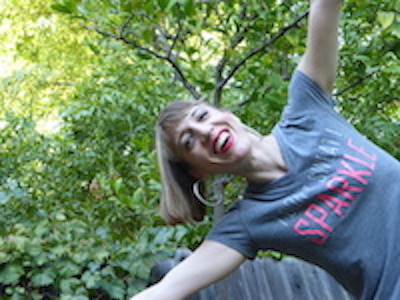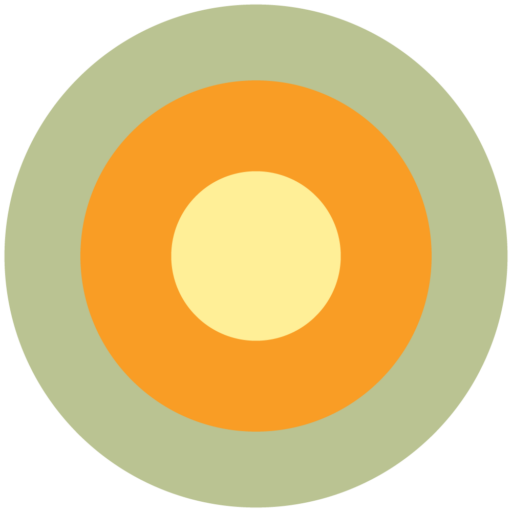
Autoimmune disease and Trauma: The Dailey Method Connection
Written by Casey Hersch, MSW, LCSW
As I stepped into the gym for my daily workout, I looked around and saw how many people were staring at screens, listening to music, or lost in thought. I imagined many of the thoughts were focused on the end of the workout rather than a moment by moment experience of the workout. Some people looked at their clocks, maybe they were counting down the time remaining before the workout ended. Sadly, people didn’t look like they were enjoying themselves; I didn’t see people laughing while on the treadmill. I used to be one of these people. Exercise was a means to an end. It was a way I kept a lean figure, reduced stress, and maintained muscle mass. There were many days I didn’t feel like going to the gym, but I did anyways, because I was addicted to fitness. I loved how it made me feel as my brain’s happy chemicals flooded my body.
Today, I view exercise very different than I did a decade ago. I am grateful my attitude and behaviors changed. Had I continued my intense workouts–deriving little joy from them, and straining my joints so I could feel surges of happy chemicals– I would have missed the health benefits I had yet to realize.
I discovered The Dailey Method at a time when I needed it the most. My passion for ballroom dance, and a desire to strengthen my body so I could dance with less injury, drew me to Dailey Method. But once I began, the reasons why I made a long-term commitment to Dailey Method were much bigger. Being truthful to myself, I needed to admit I could no longer sustain the high intensity, cardio blast, calorie busting workouts I was accustomed to. I had Crohn’s disease, an autoimmune inflammatory disease affecting the large and small intestine. While exercise was a big part of my healing, because it reduced stress AND inflammation in my body (the hallmark of autoimmune illnesses), my exercise approach was not in balance. I needed to care for my body and support its healing in ways that rejuvenated it from the inside out. It wasn’t until I discovered Dailey Method that I started to understand how structured workouts can be fun and productive at the same time. I also began to realize that it is possible to take care of one’s body and nurture it while accomplishing fitness goals.
Trauma and Autoimmune disease separate me from my body
I had a long history of disregarding my body. I experienced childhood trauma that shaped my understanding of my relationship with my body. I didn’t know how to be comfortable in my body because as a child, I had to hide my feelings to keep myself safe. My childhood was dangerous and all I wanted to do was escape my body. This was compounded by chronic illness. I hated my body because it was a place of discomfort and unexplained symptoms. One way I coped with my relationship with my body was to over exercise and push my body beyond its limits; this made me feel in control. I had so many stress hormones pumping through my body from a natural response to trauma called ‘fight or flight,’ that I couldn’t manage the resulting anxiety and nervousness. Compulsive exercising helped me release and cope with an abundance of stress hormones. I thought this was a healthy way to cope. However, balance is critical in order for true healing to take place; this involves an integration of physical and emotional healing as well as incorporating one’s passion (what makes life worth living). Exercising too hard and depleting my already vulnerable immune system was not balance. A much healthier approach to cope with trauma and the stressors of chronic illness was to develop an authentic relationship with my body. This would allow me to understand my feelings, notice sensations and symptoms, and express them appropriately through mental health therapy, activities that brought me joy, and supportive relationships. Dailey Method provided one way for me cultivate this relationship with my body.
Strengthening my relationship with my body
A perfect transition for hard-core cardio fans, Dailey Method gets the heart pumping and the muscles working with varied intensities; it is empowering because there are many choices to make it one’s own. Dailey Method is typically not called a workout but instead is called a ‘practice.’ Language creates meaning, and practice suggests an experience beyond an exercise regimen. I wasn’t participating to get my workout done; I was participating in a practice that involved all parts of my body and self. This practice was my own and much like my dancing practices, it inspired growth and personal development along the way. For the first time, I accomplished my need to have a challenging physical workout BUT in a balanced, gentle, and mindful way. This was a foundation for self-care and moving through my life with body awareness.
Principles of Dailey Method transfer to LIFE
Each exercise draws attention to the inside of the body and how all parts of the body work together to support each other. Through noticing one’s foot foundation, there is an invitation to appreciate how our bodies bring us confidence and ground us to ourselves and the world around us. Dailey Method emphasizes alignment but not only in the sense of our physical bodies standing straight. The focus on alignment expands to a holistic philosophy: Only once our bodies are aligned and our authentic selves participate in this collaboration with our bodies, are we able to be aligned in our greater purpose and day to day intentions. Our bodies are always communicating with us; sometimes the messages are subtle and we ignore them. But, Dailey Method awakens an awareness of the language of the body and this makes us more mindful of what it needs to heal and feel good.
Mind-body approaches enhance healing
For those of us with trauma, autoimmune disease, and chronic illness, it is easy to develop a detached relationship from one’s body. Movement is very important for healing. Our bodies express themselves through movement and this is an essential component in healing from trauma. Illness is never one dimensional. Healing is always enhanced with approaches that show how the body works for us and in coordination with each part of the body and our environment. Dailey Method honors these connections and because of my practice, I am making connections with myself that are furthering my healing.
Finding meaning in exercise
Today, I no longer view exercise as a means to an end. It is a process where I can be in the moment and enjoy the lessons my body teaches me about life. As I continue to develop my Dailey Method practice, it supports the other practices in my life. I feel confident and empowered as a woman. I know myself better than anyone else knows me. Because of this, I like my body, not only for its physical strength, but for the limitless potential it has to heal and enhance my life experiences. I feel subtle changes in my body as it learns to move with ease, but I know the changes that have taken place in the rest of my life because of it.
Casey Hersch, MSW, LCSW is a licensed clinical social worker, author, and founder of www.lightyoursparkle.life. She specializes in chronic illness, trauma, and integrative models for healing. Inspired by her own struggles with autoimmune illnesses and trauma, she educates about empowerment and how to build individualized healing plans.

